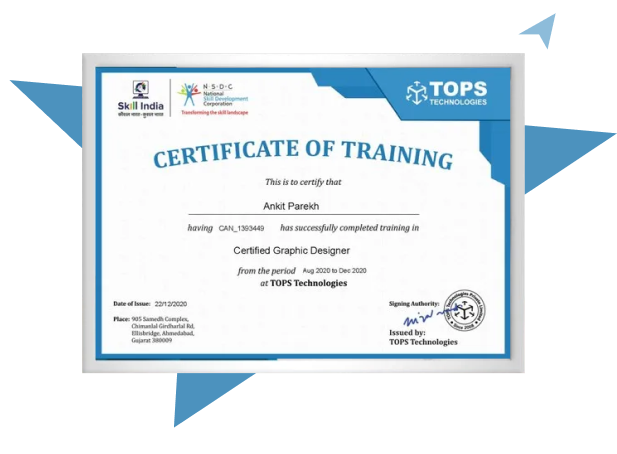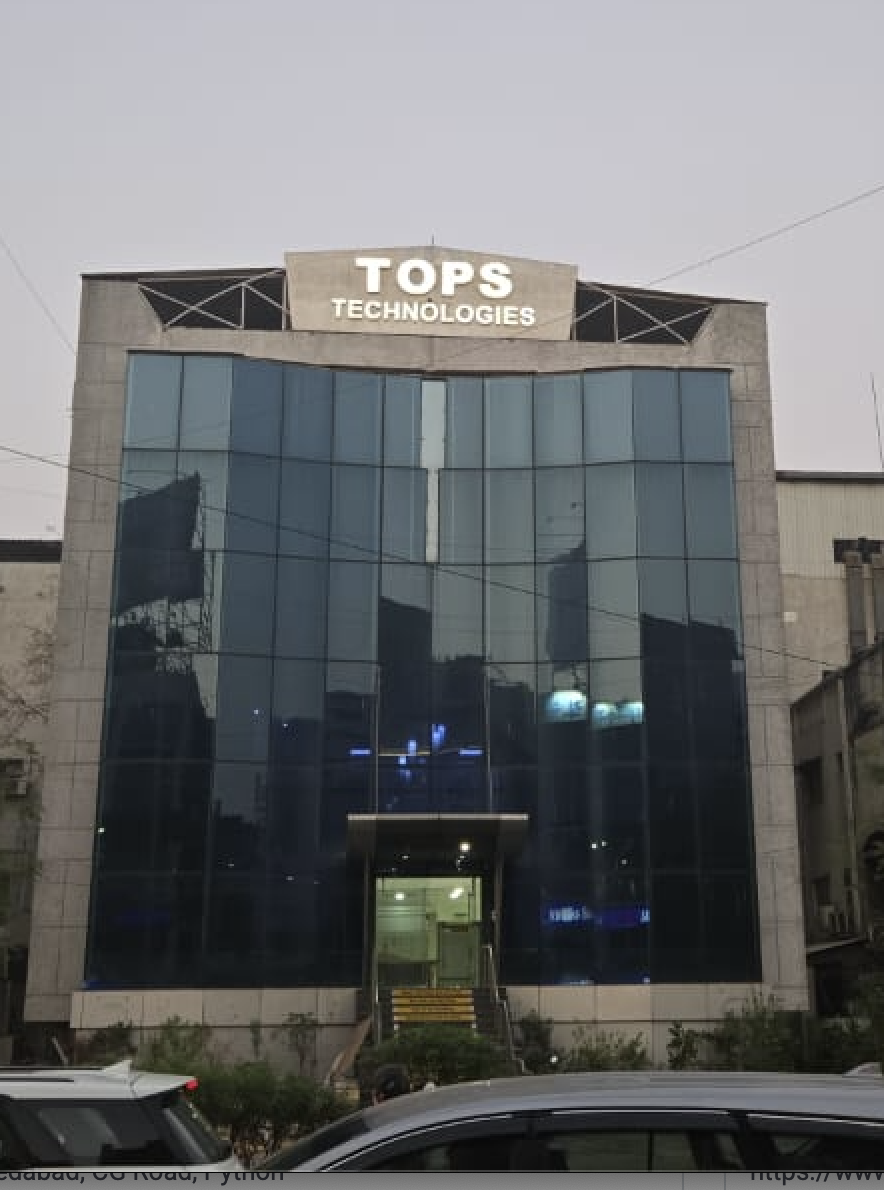Our Facts and Figures
1 Lac+
Student Placed
3000+
Companies TieUp
19+
Offices in India
50+
Industry Courses
Get 100% Job Assistance by enrolling in Certified Data Analytics Course
Key Highlights
Limited Students Batch
Personalised Attention
Highly Qualified Teachers
Flexible Batch Timings
Interactive Learning
Live Projects
Career Support
Job Oriented Training
Data Analytics Course Highlights
Why dig into data analytics now? The answer isn't just in numbers; it's in future-proofing your career. Our world revolves around data.
From health to business, informed decisions hinge on interpreting numbers. Opt for this Data Analyst Course and take the first step in mastering the universe of data.
In the rush of today's markets, being good at your job isn't enough. You must outpace others. That's where this course can turn the tide.
This course acts as a catalyst, boosting you from a mere participant to a decision-maker in your field. We cover the ABCs of data analytics: starting from data gathering to creating insightful visualisations.
You're not just learning theories. You'll get hands-on experience with tools like Python and SQL. This course also emphasizes real-world case studies. You’ll become skilled at asking the right questions, spotting trends, and making sharp choices.
No matter your job, our training equips you for bigger challenges. Make no mistake; this is an investment in you. So, if you’re looking for a data analyst course with job guarantee in India, this is the course for you as we provide 100% placement assistance.
Why Take This Data Analyst Course Online With Placement Assistance?
You may wonder, "Why invest in a formal course when information is freely available online?" While search engines offer facts, they can't deliver the nuanced skills that come from structured learning.
Here are compelling reasons to enroll in this course and how this would help you secure Data Analyst Training with Job Guarantee through placement assistance:
- Expert Mentorship: Search engines lack the ability to critique or guide. Our expert instructors offer personalized feedback tailored to refine your skill set.
- Professional Networking: This course provides exclusive access to industry professionals through webinars and interactive Q&A sessions, an opportunity that simple online searches cannot offer.
- Credibility Enhancement: Completing this course earns you a verified certificate, providing a significant advantage in the job market. This credential adds tangible value to your resume and LinkedIn profile.
- Applied Learning: This curriculum includes practical projects rooted in actual industry scenarios. This hands-on approach goes beyond theoretical understanding to offer actionable insights.
- Problem-solving skills: Search engines can offer data, but they can't teach you how to interpret or apply it. This course cultivates problem-solving abilities, preparing you to meet professional challenges.
Opt for this comprehensive course and transition from being a mere consumer of information to a proficient, industry-ready professional.
Data Analyst Training And Placement: Course Features
Don't miss your chance to rise above the ordinary. This Data Analyst Course with Placement assistance guarantee isn't just another educational program; it's a robust toolkit designed to launch your career. Here's how:
Quizzes: Master Through Evaluation
- Timed Tests: Our quizzes are timed to mimic real-world conditions, sharpening your ability to think on your feet.
- Skill Assessment: Instantly gauge your proficiency and identify areas for improvement.
Videos: Visual Learning, Real Impact
- Expert-Led: Learn directly from industry leaders through high-quality videos that make complex topics easily digestible.
- On-Demand: Revisit lessons anytime, reinforcing your learning at your own pace.
Forum: Your Virtual Classroom
- Peer Interaction: Engage in stimulating discussions, share resources, and learn from your peers.
- Expert Q&A: Get timely answers to your pressing questions directly from instructors.
Moreover, we understand the importance of employability. That's why we offer this data analyst course online with placement. Secure your future by not just learning, but also by stepping right into the industry with a guaranteed placement.
How To Become A Data Analyst From Scratch?
We have made this course focusing on which skills are essential to the role of a data analyst:
Getting Started with Database
- Relational Databases
- Primary Key and Foreign Key
- Joins
- Creating SQL Select Queries
- Working with Null and Data Types
- Using JOIN To Query Multiple Tables
- Operators and Functions
- Data Aggregations
- Using Table Expressions
- Pivot Data and Grouping sets
- Data Modifications
- Programming with SQL
- Error Handling and Exceptional Handling
Getting started with Excel
- Creating and Filtering Tables
- Calculations to existing data in Tables
- Pivot table and charts
- Aggregation Data with Pivot tables
Introduction to Data Analytics
- Overview of Data Analytics
- Descriptive Analytics
- Diagnostic Analytics
- Predictive Analytics
- Prescriptive Analytics
- Types of Data
Python Programming
- Getting Started with Python
- Core Python Programming
- Collections in Python
- Functions
- Python Packages and Modules
- Data Analytics With Python
- Data Normalisation in Python
- Data Binding with Python
- Data Formatting with Python
- Data Analytics with Python
- Model Development and Customization
- Data Analysis
- Correlation and GroupBy
This is one of the best data analyst courses with placement assistance you will find out there.
Who Can Take This Data Analytics Course?
Have you pondered if this course fits your profile? Let's cut through the fog.
- Career Changers: Craving a career switch? This course serves as a springboard, propelling you into the burgeoning field of data analytics.
- Working Professionals: Already employed but feel stagnant? Acquire analytics skills to climb the corporate ladder or pivot within your industry.
- Students and Recent Graduates: Gain a competitive edge over peers by learning data analytics, a skill set that employers eagerly seek.
- Entrepreneurs and Business Owners: Running a business? Apply analytics to improve decision-making, sales, and overall performance.
- Freelancers: Offer data analytics as a service and expand your client base. Become a one-stop solution.
One Course, Multiple Paths: Your Gateway to Data Analytics Mastery
Wondering if this course aligns with your current skill level? Good news—our diverse range of offerings makes this course a perfect fit for everyone. Here's how:
- Beginner Level: No prior knowledge? No problem. We lay the foundation with basics like data types and key metrics, ensuring a smooth entry into the world of data analytics.
- Intermediate Level: Have some exposure but want to dig deeper? This level enriches your existing knowledge.
- Job-Oriented: On every level, we intertwine theoretical learning with practical exercises. Real-world projects and case studies prepare you for immediate application of your skills in a work environment.
On top of this, this data analyst training provides placement assistance. This isn't just training; it's a career pathway. By ensuring a job guarantee, we not only equip you with top-notch skills but also offer a direct route to high-paying positions in the thriving data analytics sector.
Your Investment Today, A High-Paying Job Tomorrow
When you enroll in this course, you're not just acquiring skills; you're securing your financial future. Here's why:
- Industry-Relevant Curriculum: We align these modules with the demands of today's job market. Learn what employers are looking for, right now.
- Hands-On Experience: This course mixes theory with real-world case studies and projects. You don’t just learn—you practise, becoming job-ready from day one.
- Networking Opportunities: Access to industry insiders and alumni helps you forge valuable connections, setting the stage for potential job offers and collaborations.
- Certification of Excellence: A verified certificate from our esteemed institution adds a layer of credibility to your resume, signalling to employers that you're a top candidate.
If you're serious about enrolling in a data analyst course that guarantees a job in India then this is the right course for you. We’re not just providing training; we’re offering a pipeline to secure, high-paying jobs in one of the fastest-growing industries.
Potential Career Paths After Completing This Data Analytics Course
After this data analyst course with placement assistance, you can get jobs as:
Data Analyst
Wondering “What does a data analyst do?” As a Data Analyst, you'll serve as the linchpin in any organization, turning raw data into actionable insights. Your expertise will guide decision-making processes, impacting everything from marketing strategies to operational efficiencies.
Approximate Salary: ₹500,000 to ₹900,000, depending on experience and the complexity of tasks.
Business Intelligence Analyst
Specializing in converting data analytics into business solutions, a Business Intelligence Analyst is key to enhancing profitability. You will utilise advanced analytics tools to inform strategic planning and drive business growth.
Approximate Salary: ₹600,000 to ₹1,200,000, depending on experience and project scope.
Machine Learning Engineer
Building algorithms that enable computers to perform tasks without explicit instructions is the role of a Machine Learning Engineer. Your skill set will be integral to developing automated systems that can adapt and learn from new data.
Approximate Salary: ₹800,000 to ₹1,800,000, depending on experience and specialized skills.
Data Visualization Specialist
A Data Visualization Specialist transforms complex data sets into easily understandable visual formats. You'll work closely with decision-makers, helping them comprehend the data's practical implications through charts, graphs, and other visual tools.
Approximate Salary: ₹450,000 to ₹1,000,000, depending on experience and the complexity of visualizations.
Data Architect
As a Data Architect, you'll design, create, and manage an organization’s data architecture. Your work ensures tha data management and storage align with company requirements, privacy policies, and industry standards.
Approximate Salary: ₹1,000,000 to ₹2,500,000, depending on experience and the scale of data architecture.
Unlock Flexibility and Guaranteed Placement With This Online Course
Wondering if this online course can truly offer you the career leap you seek? Here’s how this online program isn’t just convenient but also a direct ticket to job opportunities.
- Learn Anytime, Anywhere: The digital format allows you to access course materials 24/7. Learn when you want, where you want.
- Quality Instruction: Digital doesn't mean diluted. Get the same quality of education online as you would in a physical classroom, delivered by industry experts.
- Interactive Platforms: Participate in live webinars, real-time Q&As, and forums. Engage with instructors and peers as if you're in a traditional classroom.
- Placement-Driven Projects: This course includes projects that simulate actual workplace tasks. These make you job-ready and attractive to prospective employers.
- Cost-Effectiveness: Save on commuting and other related costs. Invest solely in what truly matters—your education and future career.
This course isn’t just an educational experience; it’s a career catalyst. This data analyst course guarantees placement assistance. This is why we are the best institute for data analyst courses in India.
Student Views: Hear It from Those Who've Walked the Path
Sarah Patel
"This course was a game-changer for me! I switched careers, and now I'm a Data Analyst at a leading tech firm. The curriculum was on point, and the online format fit my hectic schedule."
Ritesh Kumar
"I was skeptical about online courses, but this one exceeded my expectations. The hands-on projects made me job-ready. Lost one star only because I wish there were more specialized modules."
Emily Chen
"I can't recommend this course enough! As a working professional, the flexibility allowed me to learn at my own pace. The placement guarantee was the cherry on top; I secured a job even before completing the course!"
Aman Verma
"As a recent graduate, this course gave me an edge in the job market. The instructors were knowledgeable, and the course structure was comprehensive. It covered everything from basics to advanced topics."
Priya Gupta
"This course was worth every penny! The data analyst course with placement guarantee is not just a tagline; they really do ensure you get a job. I'm now working as a Business Intelligence Analyst, and I owe it all to this course."
Why Choose This Course? Elevate Your Career to New Heights
This is one of the best institutes for data analysis Courses in India:
- Highly Qualified Teachers: Learn from the best in the field. Our instructors bring both academic expertise and real-world experience.
- Flexible Batch Timings: We get it; life is busy. Choose a schedule that fits your life, not the other way around.
- Interactive Learning: Engage in compelling discussions, collaborative tasks, and immersive activities that make learning a two-way street.
- Live Projects: Tackle real-world challenges through live projects. This is hands-on learning at its finest.
- Career Support: From resume crafting to interview preparation, we offer full-cycle career support.
- Job-Oriented Training: Practical, actionable skills are our focus, making you an ideal candidate for employers.
Our graduates don’t just land jobs; they land high-paying jobs, reflected in an average salary hike of 40%.
Aim for the stars with salary packages going up to ₹4.5 Lacs for our top-performing students.
With a vast network of industry connections, we bring you a broad array of job opportunities.
Enroll In A Top-Rated Course!
Apart from our online Data Science Course we also have offline classes! Our Data Science Course in Vadodara, Data Science Course in Surat, Data Science Course in Rajkot, and Data Science Course in Gandhinagar have been pivotal for beginners. We've seen an 85% jump in enrollments and 72% of these beginners get their first job within six months.
But it's not just online magic; our offline classes are making waves too. 95% of students in our offline courses claim that in-person mentorship is invaluable. So, whether it's a Data Science Course in Vadodara or a Data Science Course in Ahmedabad, online or offline, we've got you covered for success.
Frequently Asked Questions (FAQs)
What makes you the best institute for data analyst courses in India?
We pride ourselves on offering a comprehensive curriculum taught by industry experts. With personalized attention, limited batch sizes, and extensive career support, we aim to be the best institute for data analyst courses in India.
Do you offer data analyst training and placement near me?
Absolutely! While this course is primarily online, our network of 3000+ hiring partners ensures that you have ample local opportunities for training and placement near your location.
Is there a data analyst training with job guarantee?
Yes, we stand by our promise of job-oriented training. We offer data analyst training program with a job guarantee, ensuring that your educational investment translates into career success.
Which is the best data analyst course with placement?
This course is focused on not just educating but also placing our students in well-paying roles. With a vast network of hiring partners and a job guarantee, we strive to offer the best data analyst course with placement.
40%
Average Salary Hike
4.5 Lacs
Highest Salary
3000+
Hiring Partners
Join Our Free Upcoming Webinar
Learn the Website Hacks and Provide Better Security
23 Dec 2025, 04:00 PM
Trainer
Faruk Pathan
(Sr. Technical Trainer)
Data Science with AI: Tools, Trends and Real-World Use Cases
24 Dec 2025, 03:00 PM
Trainer
Priya Shah
(Sr. Technical Trainer)
Learn Python in 60 Minutes
25 Dec 2025, 04:00 PM
Trainer
Sanket Chauhan
(Sr. Technical Trainer)
AI in Graphic Design – Future of Creativity
26 Dec 2025, 02:30 PM
Trainer
Parth Patel
(Sr. Technical Trainer)
Data Analytics Course Curriculum
Download Curriculum- Relational Databases
- Primary Key and Foreign Key
- Joins
- Creating SQL Select Queries
- Working with Null and Data Types
- Using JOIN To Query Multiple Tables
- Operators and Functions
- Data Aggregations
- Using Table Expressions
- Pivot Data and Grouping sets
- Data Modifications
- Programming with SQL
- Error Handling and Exceptional Handling
- Creating and Filtering Tables
- Calculations to existing data in Tables
- Pivot table and charts
- Aggregation Data with Pivot tables
- Overview of Data Analytics
- Descriptive Analytics
- Diagnostic Analytics
- Predictive Analytics
- Prescriptive Analytics
- Types of Data
- Getting started with Python
- Core Python Programming
- Collections in Python
- Functions
- Python Packages and Modules
- Project Case Study
- Ecommerce Purchase Predections
- Insurance Policy Quote Predections
Our TOPS Training Centers in India
Get Training Certificate by Government
Recognized NSDC/Skill India

- National Skill Development Corporation
- Supported by the vision of PM Shri Narendra Modi
- Certification by NSDC SkillIndia
- Valid for all Jobs and College Training
- International Recognition

Student Reviews
Deepak Parekh
Data AnalyticsOverall, the Data Analytics course at TOPS Technologies Ahmedabad was a valuable learning experience. The comb...
Read MoreKiran Mehta
Data AnalyticsI appreciated the focus on real business problems throughout the course. Understanding how to interpret data a...
Read MoreZoya Contractor
Data AnalyticsHands on projects during the Data Analytics training at TOPS Technologies Ahmedabad helped me connect theory w...
Read MoreSameer Merchant
Data AnalyticsThe course curriculum was thoughtfully designed and covered essential analytics tools and techniques. It helpe...
Read MoreShabnam Shaikh
Data AnalyticsI enrolled in the Data Analytics course at TOPS Technologies Ahmedabad, and it gave me confidence in using ana...
Read MoreSalim Pathan
Data AnalyticsThe Data Analytics course helped me understand data cleaning, analysis, and visualization in detail. The assig...
Read MoreTasneem Ali
Data AnalyticsData Analytics course beginners ke liye easy aur well-structured tha. Step by step teaching style ki wajah se...
Read MoreArif Siddiqui
Data AnalyticsThe trainer at TOPS Technologies Ahmedabad explained complex analytics concepts in a very simple and easy to u...
Read MoreNazia Qureshi
Data AnalyticsWhat I liked most about the Data Analytics course was its practical approach. Each topic was supported by hand...
Read MoreIrfan Sheikh
Data AnalticsI had a great learning experience during the Data Analytics training at TOPS Technologies Ahmedabad. Working w...
Read MoreSana Khan
Data AnalticsThe Data Analytics course at TOPS Technologies Ahmedabad provided a strong foundation in data analysis and rep...
Read MoreAyush Joshi
Data AnalyticsMaine Data Analytics course TOPS Technologies Ahmedabad se join kiya, aur training kaafi practical rahi. Excel...
Read MoreVishakha Tekvani
Data AnalystHii I am vishakha tekvani I am study in TOPS TECHNOLOGYS in CG road AHMEDABAD. My course is data analytics co...
Read MoreViral Gajjar
Data AnalystOverall Training is good & enhance my knowledge in Python, SQL & Data Analysis Topics. Overall Good Experience...
Read MoreFAQ
Data Analytics Course is the most sought-after course in India. It is an advanced course that provides skills and knowledge to build data analytics solutions for various organisations.
The Data Analytics Course fees depend on the institute, duration of the course and location. The cost of Data Analytics courses varies across institutes. Some institutes charge a nominal fee for their courses, while others charge more for a full-time course.
Data Analytics Live Project Training at TOPS Technologies is a data analytics training course that will provide you with the skills and knowledge you need to become a data analyst.
TOPS Technologies is a leading provider of Data Analytics Training programs in India. Data Analytics Training programs are designed by industry experts and focus on practical applications, hands-on learning and industry-relevant case studies.
This is a common question that is asked at various job portals - Data Analyst Jobs in India. We provide the right career opportunities for aspiring data analysts who want to work in India. Here are some of the tips for getting Data Analyst jobs in India:
- Get an internship with a company that has an analytics team or use your skillset from your previous jobs or school projects.
- Join a community of data analysts on LinkedIn. You can also start your own community on Quora if you have the skillset and time.
- Get certified by industry bodies like TOPS’ Data Analytics Certification Courses
- Start building up your portfolio by joining online communities that focus on data analysis or related topics.
- Network with potential employers to get job offers for a data analyst position
- Always ask for more information about the company - ask about their analytics team, how many years of experience they have had and what other skills they need from a data analyst
TOPS offers a Data Analytics course with placement. This course is designed to equip students with the skills necessary for a career in Data Analytics.
This Data Analytics Course with Placement allows students to learn about data analytics and its various uses in different industries. The course also provides training on how to build predictive models, create dashboards, and conduct data analysis using SQL.
TOPS offers placement assistance for students who are interested in pursuing a career in data analytics. TOPS has a team of experienced placement experts who help students find their dream job after they complete the course.
Data scientist salary in India is one of the most sought-after topics. It is a very lucrative career option that promises to take you to the top of your career ladder. Data scientists are paid well in India, and the demand for data scientists will only increase in the coming years.
The average annual salary of a data scientist ranges up to Rs 20 lakhs per year, depending on their experience and skill set. If you are looking for a job as a data scientist, it’s important that you know what companies are offering what salaries so that you can negotiate your salary accordingly.
Data Analytics Interview Preparation for Freshers is one of the most popular services offered by TOPS Technologies. We at TOPS Technologies offer Data Analytics Interview Preparation for Freshers. We have a team of experts who are well-versed with the latest technologies and tools in the industry. They will help you prepare for your interview by providing mock interviews and more.
TOPS Technologies offers Data Analytics Interview Preparation for Freshers with a unique approach. The company helps freshers to prepare for their interviews by providing them with a mock interview which includes a live interview and an opportunity to practise answering questions from organisations.
Data analytics has become popular in recent years and is now a sought-after skill. The skills needed for data analytics job roles are varied and include both technical and non-technical skills.
Non-technical skills include analytical thinking, creativity, problem-solving, leadership, interpersonal communication, teamwork and customer service.
Technical skills required are statistical analysis techniques like linear regression or Bayesian analysis methods. Other technical skills would be programming languages like Python or R, which are used to extract insights from datasets with predictive models like machine learning algorithms or deep learning networks.
Interview Questions
Analysing raw data to glean information and meaningful insights is the process of data analytics. Data must be cleaned, transformed, and modelled to detect patterns and trends. These findings must then be interpreted to make wise judgments. Data analytics is becoming increasingly crucial for companies, organisations, and governments to obtain a competitive advantage in the digital era. Using data, they may improve customer experience, make better decisions, optimise operations, and find new business opportunities. Additionally, data analytics can assist them in risk mitigation, trend prediction, and performance enhancement. In summary, data analytics is vital for businesses to accomplish their objectives, dominate their industry, and spur innovation.
There are four main types of data analytics: descriptive, diagnostic, predictive, and prescriptive analytics. Descriptive analytics is the most basic type, which describes past events and helps to understand what happened and why. Diagnostic analytics is the next level, which goes beyond descriptive analytics and provides insights into why something happened and what can be done about it. Predictive analytics uses statistical techniques and machine learning algorithms to predict future outcomes and trends. Finally, prescriptive analytics is the most advanced type, predicting future outcomes and providing action recommendations. Every kind of analytics serves a specific purpose and helps organisations gain insights and make better decisions.
Descriptive analytics is the most basic type, which uses historical data to provide insights into past events and answer questions like "What happened?". Diagnostic analytics extends further descriptive analytics to assist in determining the causes of events and what can be done to prevent them in the future. Predictive analytics analyses past data and forecasts future trends and events using statistical methods and machine learning algorithms. The most sophisticated analytics is prescriptive analytics, which forecasts future results and offers suggestions for achieving the desired result. In conclusion, descriptive analytics concentrates on previous events, diagnostic analytics concentrates on figuring out why something occurred, predictive analytics concentrates on projecting future events, and prescriptive analytics concentrates on advising actions to achieve a desired result.
Data mining is extracting useful information and insights from large volumes of data, enabling organisations to identify patterns, correlations, and anomalies in their data. Data mining techniques include clustering, association analysis, and regression analysis. These techniques help organisations better understand their data and inform business decisions and strategies. Data mining is particularly relevant in data analytics because it allows organisations to uncover insights that would be difficult or impossible to identify through manual analysis.
Data analytics refers to analysing data to gain insights and inform decision-making. It involves examining data from various sources, such as customer interactions, financial transactions, and social media. Big data analytics, conversely, refers explicitly to analysing large volumes of complex and diverse data sets, known as big data. Big data analytics often uses advanced tools and techniques like machine learning and artificial intelligence. Big data analytics aims to identify patterns and trends in large data sets that would be impossible to identify using traditional analytics methods.
Univariate Analysis: It involves analysing only one variable at a time without considering any other factors. For instance, calculating frequency distributions, mean, median mode etc., for age groups would be an example of Univariate Analysis.
Bivariate Analysis: This deals with studying relationships between two different variables simultaneously using tools like Scatter plots, Correlation Coefficient( r ) etc., e.g. the correlation between height & weight
Multivariable Analysis - Here, more than 2 independent variables are considered simultaneously when making predictions about an outcome, such as the regression model, which considers multiple predictors, e.g. predicting house prices based on location, size,number_of_bedrooms etc.
Latest Blogs
Placement Success Story: From Textile to Data Anal...
Kuldeep’s journey proves that with the right guidance, anyone can successfully transition into IT. I...
View full Blog10 In-Demand Data Analyst Skills to Get You Hired...
A data analyst with expertise in, say, artificial intelligence in India might bag a salary that's a...
View full BlogData Analyst Internship : A Step-by-Step Guide for...
Data analysis isn't just crunching numbers. It's like being a detective but for data. You gather, in...
View full BlogWhat Does a Data Analyst Do: Roles, Skills, and Sa...
In India, the data analytics industry is booming like never before. Professionals skilled in deciphe...
View full Blog








